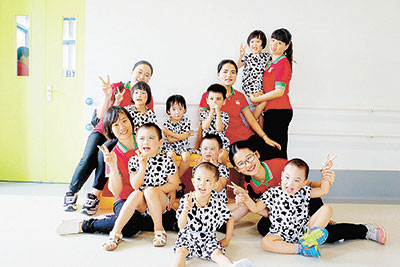
Zhang Qian
zhqcindy@163.com
OVERWHELMED by excitement, dozens of elderly people and children, representing the residents at the Shenzhen Social Welfare Center, celebrated Thursday as they were moving into their new home in Guanlan, Longhua District.
With a much larger space than the old social welfare center, the new site in Guanlan is going to provide around 700 vacancies for orphans and 300 beds for the elderly.
Built in 1992, the old social welfare center, located in Meilin, Futian District, hardly meets the demand of orphans and the increasing number of the seniors who apply to stay there.
A woman in her late 70s at the center told Shenzhen Daily that the staff had already helped them move some of their belongings to the new home, but they are still waiting for the exact date to move.
“We have been applying for a larger venue to house the elderly and the children for many years and we are so glad that we will move into the large center soon,” said Zhang Bin, head of Shenzhen Social Welfare Center.
Zhang said that the old social welfare center will continue to be used to accommodate handicapped adult orphans who can hardly earn a living on their own. The center’s staff call this special group of people “big kids” as they are adults, but still need people to take care of them.
Like the old center, the new site is comprised of three areas: a nursery home, a children’s home and a health-care center between the two areas. Residents of the social welfare center are seen by doctors there for minor illness, but still need to be transferred to larger hospitals if they are severely sick.
Inside of the children’s home, 35 units of three-bedroom apartments, each covering an area of nearly 100 square meters, have been decorated as normal homes where three to four orphans live in their simulated family.
In a simulated family, a real couple is employed by the social welfare center to take care of three to four orphans or children whose parents are behind bars and cannot raise them. The family will live together for years until the kids grow up and leave the home.
Like normal families, the children will attend a school located inside the center when they reach school age. However, the wives are required to be stay-at-home mothers to take care of all the children in their simulated families. The husbands can work and earn money, but the center also pays salaries to the couples.
“We find that our children are more adaptable to society if they live in simulated families compared to those children who live collectively with only the care of social workers,” said He Xiao-ling, the person in charge of the simulated family project.
There are currently 10 simulated families that have been paired up by the social welfare center. These families, living in rental apartments near the old center, will move into the new apartments soon.
Arranging overseas adoption is one of the services provided at the center. According to the head of the social welfare center, overseas families have adopted more than 700 kids since the center was established in 1992.
The United States is the country for most of the children that have been adopted from the center. Each year, staff from Shenzhen Social Welfare Center visit a certain number of adopted children and their new families.
The center also put on a performance by the elderly and children in celebration of Children’s Day after the inauguration ceremony Thursday.
| 
